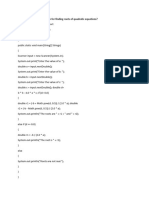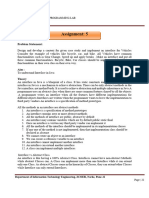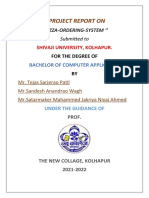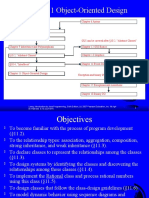0% found this document useful (0 votes)
16 views5 pages10 Programs
The document provides Java code examples demonstrating key Object-Oriented Programming (OOP) principles such as inheritance, polymorphism, encapsulation, and abstraction. Each example illustrates a specific concept, including simple inheritance with classes Animal and Dog, constructor chaining with Person and Employee, and method overloading in a Calculator class. Additional examples cover method overriding, the use of the super keyword, constructor overloading, dynamic method dispatch, abstract classes, encapsulation, and simple aggregation.
Uploaded by
hackingworldu4Copyright
© © All Rights Reserved
We take content rights seriously. If you suspect this is your content, claim it here.
Available Formats
Download as TXT, PDF, TXT or read online on Scribd
0% found this document useful (0 votes)
16 views5 pages10 Programs
The document provides Java code examples demonstrating key Object-Oriented Programming (OOP) principles such as inheritance, polymorphism, encapsulation, and abstraction. Each example illustrates a specific concept, including simple inheritance with classes Animal and Dog, constructor chaining with Person and Employee, and method overloading in a Calculator class. Additional examples cover method overriding, the use of the super keyword, constructor overloading, dynamic method dispatch, abstract classes, encapsulation, and simple aggregation.
Uploaded by
hackingworldu4Copyright
© © All Rights Reserved
We take content rights seriously. If you suspect this is your content, claim it here.
Available Formats
Download as TXT, PDF, TXT or read online on Scribd
/ 5



























































































